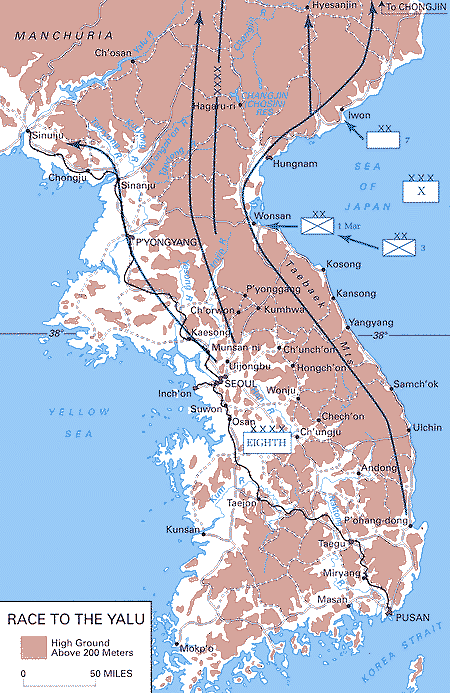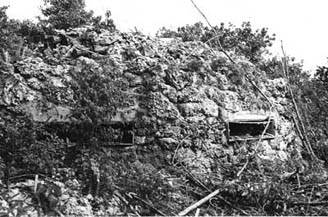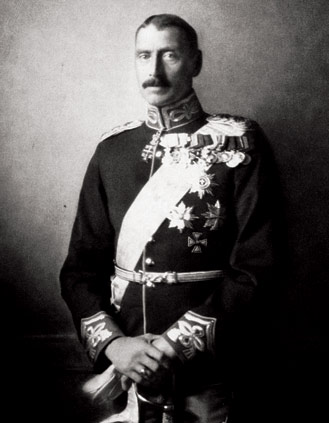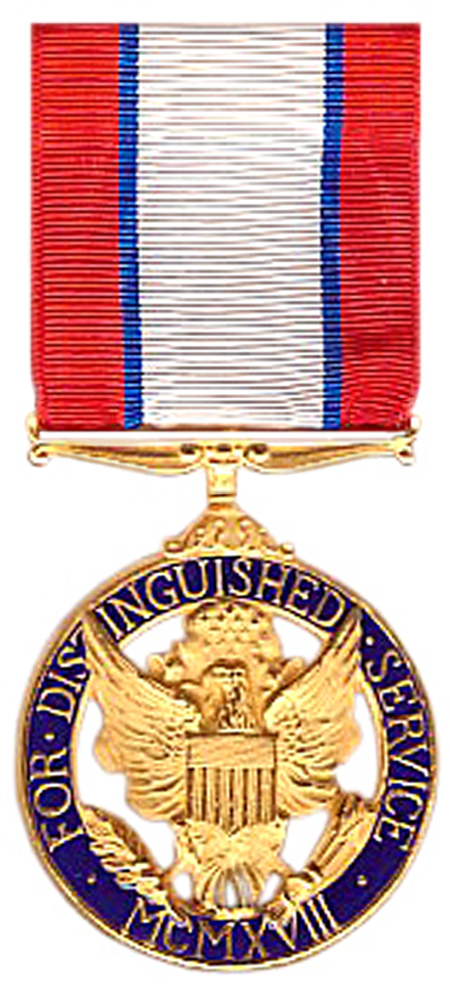|
Oliver P. Smith
Oliver Prince Smith (October 26, 1893 – December 25, 1977) was a U.S. Marine four star general and decorated combat veteran of World War II and the Korean War. He is most noted for commanding the 1st Marine Division during the first year of the Korean War, and notably during the Battle of Chosin Reservoir, where he said "Retreat, hell! We're not retreating, we're just advancing in a different direction." He retired at the rank of four-star general, being advanced in rank for having been specially commended for heroism in combat. Military career Early years Smith was born in Menard, Texas. His father died when he was seven, and his mother moved to Northern California. He graduated from Santa Cruz High School in 1911. He attended the University of California, Berkeley, working his way through college doing odd jobs (mostly gardening). After graduation, he reported for active duty as a second lieutenant in the Marine Corps in 1917. Smith was a quiet, shy Christian Scientist. ... [...More Info...] [...Related Items...] OR: [Wikipedia] [Google] [Baidu] |
Battle Of Chosin Reservoir
The Battle of Chosin Reservoir, also known as the Chosin Reservoir Campaign or the Battle of Lake Changjin (), was an important battle in the Korean War. The name "Chosin" is derived from the Japanese pronunciation "''Chōshin'', instead of the Korean pronunciation. The battle took place about a month after the People's Republic of China entered the conflict and sent the People's Volunteer Army (PVA) 9th Army to infiltrate the northeastern part of North Korea. On 27 November 1950, the Chinese force surprised the US X Corps commanded by Major General Edward Almond in the Chosin Reservoir area. A brutal 17-day battle in freezing weather soon followed. Between 27 November and 13 December, 30,000 United Nations Command troops (later nicknamed "The Chosin Few") under the field command of Major General Oliver P. Smith were encircled and attacked by about 120,000 Chinese troops under the command of Song Shilun, who had been ordered by Mao Zedong to destroy the UN forces. ... [...More Info...] [...Related Items...] OR: [Wikipedia] [Google] [Baidu] |
Battle Of Peleliu
The Battle of Peleliu, codenamed Operation Stalemate II by the US military, was fought between the United States and Japan during the Mariana and Palau Islands campaign of World War II, from September 15 to November 27, 1944, on the island of Peleliu. US Marines of the 1st Marine Division and then soldiers of the US Army's 81st Infantry Division, fought to capture an airfield on the small coral island of Peleliu. The battle was part of a larger offensive campaign known as Operation Forager, which ran from June to November 1944 in the Pacific Theater. Major General William Rupertus, the commander of the 1st Marine Division, predicted that the island would be secured within four days. However, after repeated Imperial Japanese Army defeats in previous island campaigns, Japan had developed new island-defense tactics and well-crafted fortifications, which allowed stiff resistance and extended the battle to more than two months. The heavily-outnumbered Japanese defenders put up su ... [...More Info...] [...Related Items...] OR: [Wikipedia] [Google] [Baidu] |
Menard, Texas
Menard is a city in and the county seat of Menard County, Texas, United States. Its population was 1,471 at the 2010 census. Geography Menard is located at (30.919519, –99.784446). It is situated along the banks of the San Saba River at the junction of U.S. Highways 83 and 190, about 140 miles northwest of Austin and San Antonio in central Menard County. According to the United States Census Bureau, the city has a total area of , all of it land. History The first settlement at the site of what is now Menard was the Spanish Mission San Sabá and the Presidio of San Luís de Amarillas, both established in April 1757. The presidio was later replaced by the Presidio of San Sabá in 1761. Both were intended to protect New Spain's northern frontier from marauding Comanches. Due to the presidio's isolation, it suffered repeated attacks, and was finally abandoned in 1770. Stones from the old presidio walls were used by later settlers to build homes and fences. The ru ... [...More Info...] [...Related Items...] OR: [Wikipedia] [Google] [Baidu] |
Invasion Of Iceland
The invasion of Iceland (codenamed Operation Fork) by the Royal Navy and Royal Marines occurred on 10 May 1940, during World War II. The invasion took place because the British government feared that Iceland would be used by the Germans, who had recently overrun Denmark, which was in personal union with Iceland and which had previously been largely responsible for Iceland's foreign policy. The Government of Iceland issued a protest, charging that its neutrality had been "flagrantly violated" and "its independence infringed". At the start of the war, the UK imposed strict export controls on Icelandic goods, preventing profitable shipments to Germany, as part of its naval blockade. The UK offered assistance to Iceland, seeking co-operation "as a belligerent and an ally", but the Icelandic government refused and reaffirmed its neutrality. The German diplomatic presence in Iceland, along with the island's strategic importance, alarmed the UK government. After failing to persuade ... [...More Info...] [...Related Items...] OR: [Wikipedia] [Google] [Baidu] |
Legion Of Merit
The Legion of Merit (LOM) is a military award of the United States Armed Forces that is given for exceptionally meritorious conduct in the performance of outstanding services and achievements. The decoration is issued to members of the eight uniformed services of the United States Note: National Oceanic and Atmospheric Administration Commissioned Officer Corps Amendments Act of 2012 amended the Legion of Merit to be awarded to any uniformed service. as well as to military and political figures of foreign governments. The Legion of Merit (Commander degree) is one of only two United States military decorations to be issued as a (the other being the |
Silver Star
The Silver Star Medal (SSM) is the United States Armed Forces' third-highest military decoration for valor in combat. The Silver Star Medal is awarded primarily to members of the United States Armed Forces for gallantry in action against an enemy of the United States. History The Silver Star Medal (SSM) is the successor award to the "Citation Star" ( silver star) which was established by an Act of Congress on July 9, 1918, during World War I. On July 19, 1932, the Secretary of War approved the conversion of the "Citation Star" to the SSM with the original "Citation Star" incorporated into the center of the medal. Authorization for the Silver Star Medal was placed into law by an Act of Congress for the U.S. Navy on August 7, 1942, and an Act of Congress for the U.S. Army on December 15, 1942. The current statutory authorization for the medal is Title 10 of the United States Code, for the U.S. Army, for the U.S. Navy and U.S. Marine Corps, and for the U.S. Air Force and U.S. ... [...More Info...] [...Related Items...] OR: [Wikipedia] [Google] [Baidu] |
Army Distinguished Service Medal
The Distinguished Service Medal (DSM) is a military decoration of the United States Army that is presented to soldiers who have distinguished themselves by exceptionally meritorious service to the government in a duty of great responsibility. The performance must be such as to merit recognition for service that is clearly exceptional. The exceptional performance of normal duty will not alone justify an award of this decoration. The Army's Distinguished Service Medal is equivalent to the Navy and Marine Corps' Navy Distinguished Service Medal, Air Force and Space Force's Air Force Distinguished Service Medal, and the Coast Guard Distinguished Service Medal. Prior to the creation of the Air Force Distinguished Service Medal in 1960, United States Air Force airmen were awarded the Distinguished Service Medal. Description *The Coat of Arms of the United States in Gold surrounded by a circle of Dark Blue enamel, 1 ½ inches in diameter, bearing the inscription "FOR DISTINGUISHED SER ... [...More Info...] [...Related Items...] OR: [Wikipedia] [Google] [Baidu] |
Navy Distinguished Service Medal
The Navy Distinguished Service Medal is a military decoration of the United States Navy and United States Marine Corps which was first created in 1919 and is presented to sailors and Marines to recognize distinguished and exceptionally meritorious service to the United States while serving in a duty or position of great responsibility. Navy Distinguished Service Medal is equivalent to the Army's Distinguished Service Medal, Air Force and Space Force's Air Force Distinguished Service Medal, and the Coast Guard Distinguished Service Medal. The Navy Distinguished Service Medal was originally senior to the Navy Cross, until August 1942 when the precedence of the two decorations was reversed. Currently, it is worn after the Defense Distinguished Service Medal and before the Silver Star Medal. History At the start of World War I, the Department of the Navy had the Medal of Honor as the only decoration with which to recognize heroism. To recognize acts deserving recognition, but at a ... [...More Info...] [...Related Items...] OR: [Wikipedia] [Google] [Baidu] |
Distinguished Service Cross (United States)
The Distinguished Service Cross (DSC) is the United States Army's second highest military decoration for soldiers who display extraordinary heroism in combat with an armed enemy force. Actions that merit the Distinguished Service Cross must be of such a high degree that they are above those required for all other U.S. combat decorations, but which do not meet the criteria for the Medal of Honor. The Army Distinguished Service Cross is equivalent to the Navy and Marine Corps' Navy Cross, the Air Force and Space Force's Air Force Cross, and the Coast Guard Cross. Prior to the creation of the Air Force Cross in 1960, airmen were awarded the Distinguished Service Cross. The Distinguished Service Cross was first awarded during World War I. In addition, a number of awards were bestowed for actions which took place before World War I. In many cases, the medal was awarded to soldiers who had received a Certificate of Merit for gallantry; at the time, this certificate was the only other ... [...More Info...] [...Related Items...] OR: [Wikipedia] [Google] [Baidu] |
First And Second Battles Of Wonju
The First and Second Battles of Wonju (french: Bataille de Wonju), also known as the Wonju Campaign or the Third Phase Campaign Eastern SectorThe Western Sector is the Third Battle of Seoul. (), was a series of engagements between North Korean and United Nations (UN) forces during the Korean War. The battle took place from December 31, 1950 to January 20, 1951 around the South Korean town of Wonju. In coordination with the Chinese capture of Seoul on the western front, the North Korean Korean People's Army (KPA) attempted to capture Wonju in an effort to destabilize the UN defenses along the central and the eastern fronts. After a joint Chinese People's Volunteer Army (PVA) and KPA assault breached the UN defenses at Chuncheon on New Year's Eve of 1951, KPA V Corps attacked US X Corps at Wonju while KPA II Corps harassed US X Corps' rear by engaging in guerrilla warfare. In response, US X Corps under the command of Major General Edward Almond managed to cripple the KPA forces a ... [...More Info...] [...Related Items...] OR: [Wikipedia] [Google] [Baidu] |
Second Battle Of Seoul
The Second Battle of Seoul was a battle that resulted in United Nations forces recapturing Seoul from the North Koreans in late September 1950. Approaching Seoul Before the battle, North Korea had just one understrength division in the city, with the majority of its forces south of the capital. MacArthur personally oversaw the 1st Marine Regiment as it fought through North Korean positions on the road to Seoul. Control of Operation Chromite was then given to Major General Edward Almond, the X Corps commander. General Almond was in an enormous hurry to capture Seoul by September 25, exactly three months after the North Korean assault across the 38th parallel. The advance on Seoul was slow and bloody after the landings at Inchon. The reason was the appearance in the Seoul area of two first-class fighting units of the Korean People's Army (KPA), the 78th Independent Infantry Regiment and 25th Infantry Brigade, about 7,000 troops in all. The KPA launched a T-34 attack, whic ... [...More Info...] [...Related Items...] OR: [Wikipedia] [Google] [Baidu] |
Battle Of Inchon
The Battle of Incheon (), also spelled Battle of Inchon, was an amphibious invasion and a battle of the Korean War that resulted in a decisive victory and strategic reversal in favor of the United Nations Command (UN). The operation involved some 75,000 troops and 261 naval vessels and led to the recapture of the South Korean capital of Seoul two weeks later. The code name for the operation was Operation Chromite. The battle began on 15 September 1950 and ended on 19 September. Through a surprise amphibious assault far from the Pusan Perimeter that UN and Republic of Korea Army (ROK) forces were desperately defending, the largely undefended city of Incheon was secured after being bombed by UN forces. The battle ended a string of victories by the North Korean Korean People's Army (KPA). The subsequent UN recapture of Seoul partially severed the KPA's supply lines in South Korea. The UN and ROK forces were commanded by General of the Army Douglas MacArthur of the United States ... [...More Info...] [...Related Items...] OR: [Wikipedia] [Google] [Baidu] |





